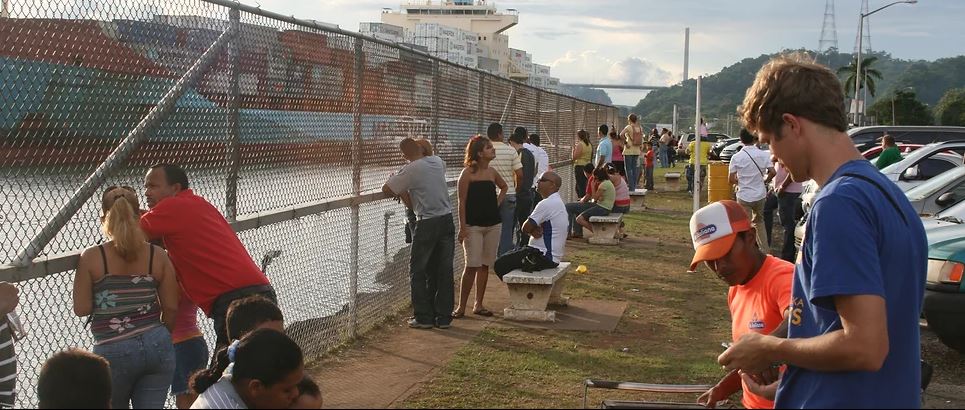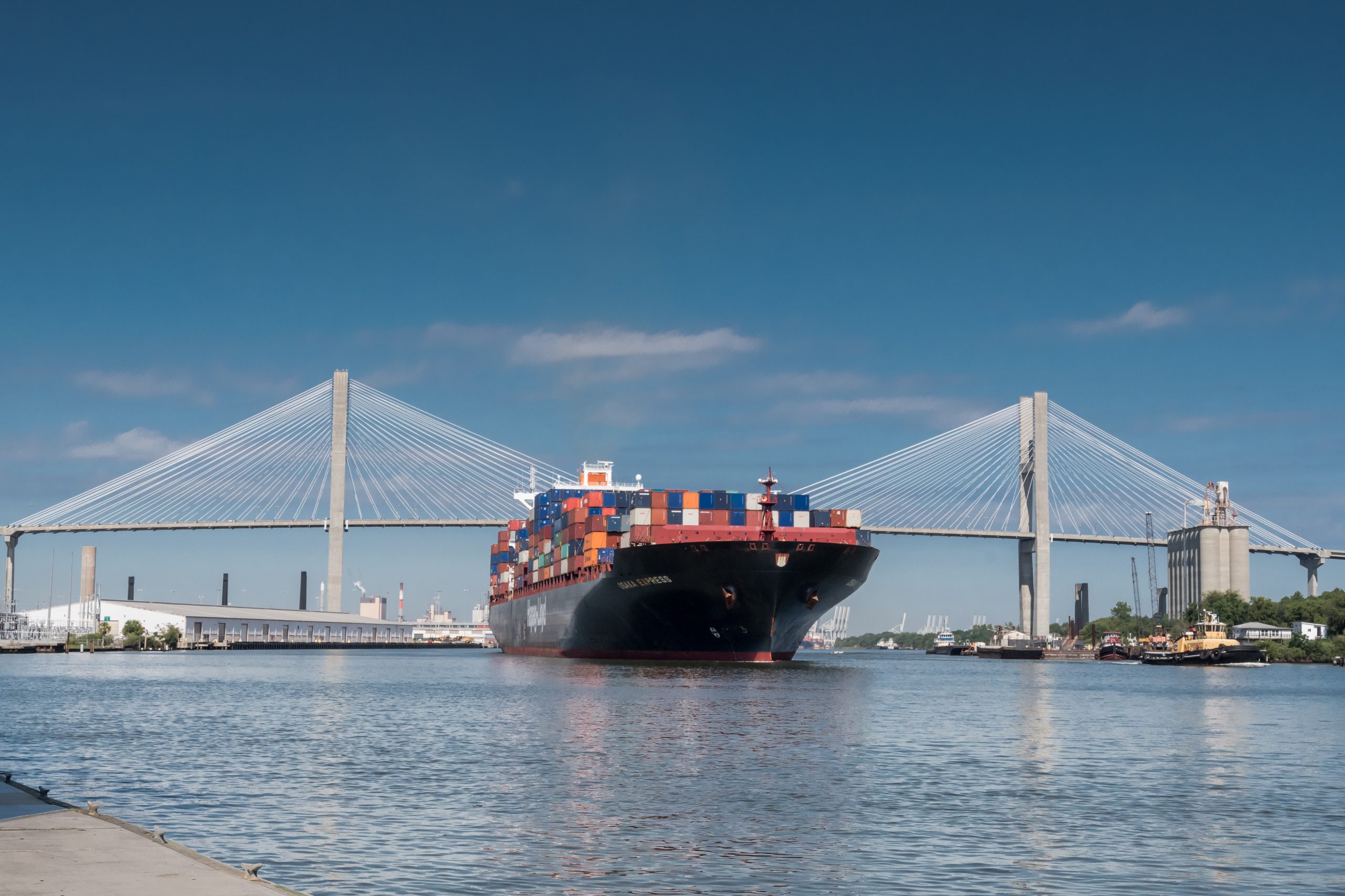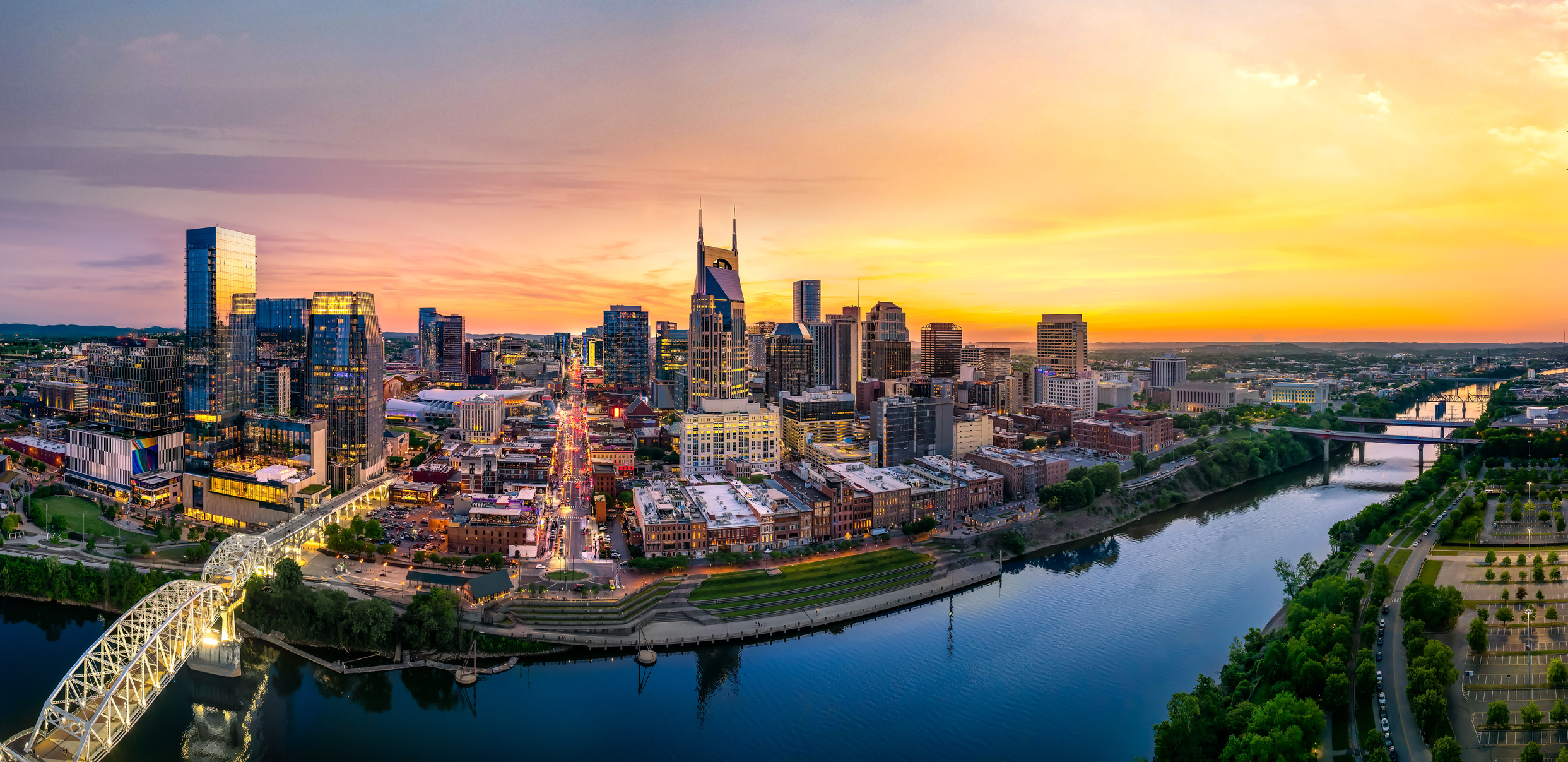By Jenna Somers

What happens to communities and environments when waterways are dredged to accommodate global shipping vessels? How does built infrastructure affect city temperatures and who is most affected? As a cultural anthropologist, Ashley Carse tries to answer these questions by investigating the local impacts of large infrastructure projects like transportation systems, shipping ports, and canals, with a focus on how the burdens and benefits of societal and economic development are distributed.
In two of Carse’s current projects, The Age of Mitigation: Global Shipping and a River on Life Support and a new project on urban heat and equity, he seeks to unearth some of the key assumptions, values, and priorities embedded in large-scale structural engineering projects, especially considering that the consequences of some decisions about infrastructure may not be fully understood for years to come.
The Age of Mitigation: Balancing Development and Environmental Impact
Carse was awarded a National Humanities Center Fellowship this academic year to work on his book, The Age of Mitigation. The book will examine the political, moral, and ecological concerns associated with the expansion of Georgia’s Savannah Harbor to accommodate container ships traveling from East Asia through the Panama Canal. It focuses specifically on the expansive and contentious efforts to manage the significant environmental impacts of the most recent harbor deepening project in Savannah.

“The sustainability of these projects is a big question. Infrastructures keep expanding, driven by the pursuit of economies of scale and efficiency. This makes many of the things we buy cheap, but it can also have significant environmental consequences. I’m interested in how, increasingly, we attempt to manage those impacts, not by building less infrastructure, but by building more,” said Carse, associate professor of human and organizational development at Vanderbilt Peabody College of education and human development.
“…we attempt to manage those impacts, not by building less infrastructure, but by building more.”
In the Savannah River, an oxygen injection system, like a massive aquarium bubbler, was installed to mitigate the effects of reduced oxygen levels caused by dredging to deepen the waterway for large cargo ships. Critics argue that if the system were ever turned off, the river’s ecosystem might collapse for lack of oxygen. This is just one of many environmental mitigation efforts associated with expanding the port. Others include rerouting the river, replacing damaged wetlands, and building a fish passage 180 miles upriver. In fact, only half of the project’s billion-dollar budget was actually dedicated to deepening the harbor. The other half was spent on efforts to manage the significant consequences of doing so.

“The book is an attempt to think about the broader phenomenon of mitigation as a response to environmental problems,” Carse said. “This is the idea that we can manage the impacts of technological and economic development, not by scaling back, but by building more. Similar projects occur in other domains, such as technological fixes to mitigate the effects of climate change. For example, can we build a large landscape of carbon sequestration and carbon capture facilities to offset our CO2 emissions? Can we inject aerosols into the upper atmosphere and build sun shields in space to reflect solar energy?”
Carse is interested in the unforeseen consequences of these technological fixes, which raise profound questions about the sustainability and equity of humanity’s relentless drive for economic development.
Urban Heat and Equity in Nashville
If built infrastructures have long-term and unforeseen consequences, then might communities of today see and feel the consequences of past infrastructures? Another of Carse’s projects—currently in its early stages—examines the urban heat island effect in Nashville, Tennessee, and its unequal burdens on various communities. The urban heat island effect occurs when cities experience higher temperatures than rural areas because they have more heat-absorbing surfaces such as highways, roads, and buildings. But even within cities, neighborhoods can experience very different levels of heat, sometimes varying by 10 degrees or more, depending on the amount of built infrastructure versus green space and tree canopy.

“The built environments that generate more heat tend to map onto race and class in particular ways,” Carse said. “Lower socioeconomic neighborhoods and Black and Latino communities in the U.S. are more likely to experience hotter outdoor temperatures. In that sense, what may appear to be a technical or engineering issue is also a social, political, and equity issue. As this suggests, the problem of urban heat is a window on the complex and varied ways that climate change affects communities.”
“…what may appear to be a technical or engineering issue is also a social, political, and equity issue.”
As specific examples, Carse notes that both the historical redlining of Black neighborhoods and development of transportation infrastructure – especially highways – may have exacerbated the effects of heat in a place like North Nashville today. There and across the city, Carse plans to understand how people respond to—or lack the resources to respond to—increasing levels of heat in their daily lives.
“For cities like Nashville, it’s a pivotal moment,” Carse said. “Policymakers, city planners, and communities will have to consider not just how we manage the general problem of hotter cities, but also the unequal burdens that extreme heat presents.”